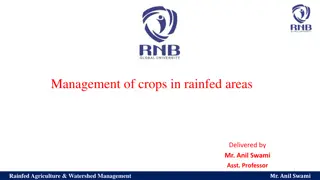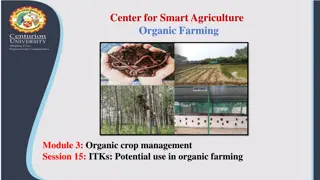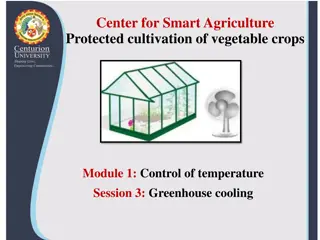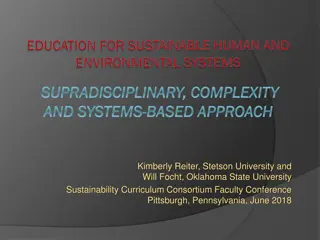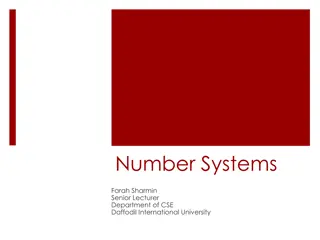Understanding Intercropping Systems and Their Benefits
Intercropping plays a vital role in optimizing productivity and resource efficiency in agriculture. Row intercropping, mixed intercropping, strip intercropping, and relay intercropping are common systems used worldwide. These systems offer various benefits such as enhanced radiation use efficiency, soil quality improvement, and increased crop diversity, contributing to sustainable land management practices.
- Intercropping systems
- Agriculture
- Productivity optimization
- Resource efficiency
- Sustainable land management
Download Presentation

Please find below an Image/Link to download the presentation.
The content on the website is provided AS IS for your information and personal use only. It may not be sold, licensed, or shared on other websites without obtaining consent from the author. Download presentation by click this link. If you encounter any issues during the download, it is possible that the publisher has removed the file from their server.
E N D
Presentation Transcript
Intercropping system: Types and benefits Sagar Maitra Professor of Agronomy
Row intercropping In row intercropping, one or more crops are sown in regular rows and component crops are sown simultaneously either in rows or without any row arrangement. Majority of the improved agricultural practices throughout the world use row intercropping to optimize productivity and resource use efficiency (Varma et al., 2017). Mixed intercropping The mixed intercropping is a practice of growing of two or more crops together without any distinct row arrangement. It is also termed as mixed cropping. The common example of mixed intercropping is observed in the pasture-based cropping system, grass and legume mixed intercropping and mixed cover cropping in temperate countries etc. In general, it is practiced to fulfill the diverse need of food and forage from scarce land area (Undie et al., 2012) and mixed stands of winter cover crops during off-season in temperate regions for soil quality improvement and production enhancement of the succeeding main or cash crops.
Strip-intercropping The strip-intercropping is another kind of intercropping system where two or more crops are cultivated simultaneously in different strips in sloppy lands. Like other intercropping systems, it has also the capability to enhance radiation use efficiency (Yang et al., 2015) and it is practiced in the sloppy lands having high possibility of soil erosion. In the agroforestry system, strip intercropping is commonly practiced. Generally, soil draining and conserving crops species are grown alternatively in the strips running perpendicular to the slope of the land or to the direction of prevailing winds for checking the soil erosion. Relay intercropping In the relay intercropping, two or more crops are grown together and they co-exist for a portion of the growing period of each, but not sown at the same time. Here, the second crop is sown when the first crop is about to complete the vital part of its cycle or completes a major portion and reaches to reproductive stage or close to maturity but before harvest (Maitra et al., 2021). There are some areas where cropping season is a limiting factor for growing two crops sequentially and hence, relay intercropping is adopted to enhance the cropping intensity (Balde et al., 2011).


